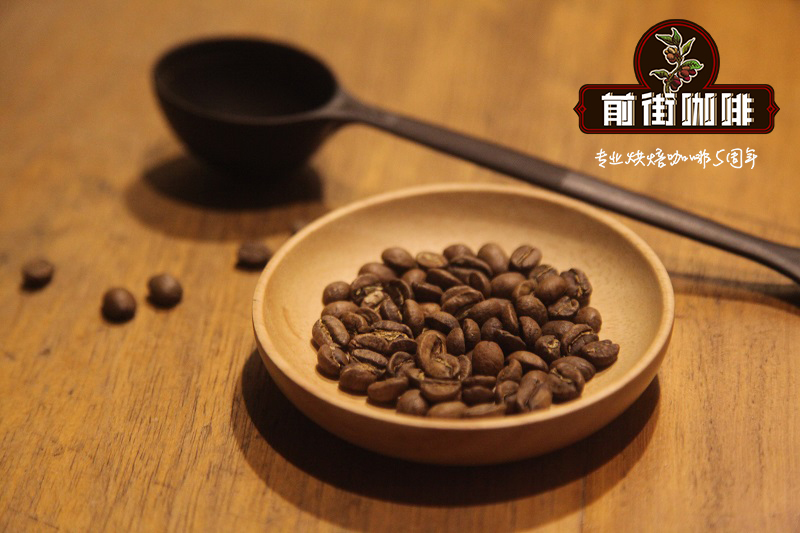The right way to drink Costa Rican Coffee how much is a bag of Costa Rican hand-made coffee beans

Professional coffee knowledge exchange more coffee bean information please follow the coffee workshop (Wechat official account cafe_style)
The first country in Central America to grow coffee; government support for development
Coffee began to appear in Costa Rica in 1729, when it was introduced from Cuba. This made Costa Rica the first country in Central America to grow coffee and the first to grow coffee because of its commercial value. Then, after Costa Rica became independent from Spain in 1821, the local government began to support the coffee industry with a series of policies. At that time, it was more than a hundred years after coffee was introduced into Costa Rica, but about 70,000 coffee trees have been planted, which shows the speed of its development. The local government's policies on the coffee industry include:
In 1825, the Costa Rican government implemented a tax exemption policy. In 1832, the local government promulgated a law that "there is land for growing coffee", meaning that coffee farmers can own the land directly if they grow coffee on any land that is not occupied. As soon as this example comes out, it encourages many people to grow coffee and promote the development of coffee. (it can also indirectly explain why most of Costa Rican coffee comes from private estates.)
It is conceivable that when there are more products, the quality will become different, affecting competitiveness. So in order to improve the quality and value of coffee, at the beginning of the 20th century, the government enacted legislation that coffee farms or plantations in Costa Rica could only grow coffee from Arabica, so as to enhance their competitiveness. This helps to understand why Costa Rican coffee beans are now so superior: coffee from Costa Rica is all Arabica, and we can never find Robusta.
Subsequently, in 1948, the Costa Rican government established an exclusive coffee department (that is, the Costa Rican coffee industry company ICAFE:Institutodel Caf é de Costa Rica. It has been taken over by the official Coffee Committee Oficinadel Caf é), mainly coaching the manor from planting, post-processing to the improvement of the sales system. The place is also very careful in handling coffee for export. Among the exported coffee, coffee beans that are considered to be of substandard quality will be colored by blue plant dyes and then returned to China for sale. Today, about 1/3 of Costa Rica's population is engaged in coffee or coffee-related industries, and per capita coffee consumption is twice that of Italy or the United States. From various policies, we can see that the government's support for the coffee industry has indirectly made Costa Rican coffee beans of excellent quality and higher competitiveness than other countries.
Costa Rican coffee beans Tara zhudota
There is a single coffee from Dota in Tarrazu, Costa Rica. Tarazhu is one of Costa Rica's world-famous coffee producing areas, located about two hours south of the Costa Rican capital SanJose. Because Tarazhu has a very high altitude, which makes her coffee rich and pleasant, and makes her a very important growing area in Costa Rica.
On the other hand, Dota is the top producing area in Tarazhu region. In many towers, the farmland is located at an average altitude of 1200-1700 meters above sea level, with ample annual rainfall and long sunshine (an average of 2150 hours per year), so sun-treated coffee beans have excellent quality: the beans are hard and full, smooth to taste and full of flavor.
Quality coffee is well deserved.
Up to now, Costa Rica's coffee industry is one of the well-organized industries in the world, with a yield of 1700 kilograms per hectare. With a population of 3.5 million, the country has as many as 400m coffee trees, and coffee exports account for 25 per cent of total exports. In Costa Rica, where coffee is produced, coffee of all grades and types also accounts for 1/3 of global consumption. Thus it can be seen that the quality of her coffee gives her a place in the global coffee market, and being loved by people, the history of the development of the coffee industry cannot be ignored.
Hand-made Costa Rican coffee beans:
V60 hand punch parameters:
Degree of grinding: BG mill: 4e
Water temperature: 90 degrees
Powder weight: 15g
Powder / water ratio: 1:15
Total cooking time: 1 minute 50 seconds.
After the first stage of water injection, wait for the liquid level to drop.
Specific manual cooking techniques:
Steaming: 30 grams of water, 30 seconds
The first stage of water injection: slowly circle water injection 90 grams, to 120 grams reading stop, wait for the liquid level to drop to the powder layer surface.
The second stage of water injection: increase the amount of water around the circle, inject 105 grams of water, stop the reading to 225 grams, wait for the powder layer to be exposed, remove the filter cup.
Costa Rican coffee bean brand recommendation
The Costa Rican beans baked in front street coffee are fully guaranteed in terms of brand and quality. And more importantly, the performance-to-price ratio is extremely high, a pack of 227 grams, the price is only 95 yuan. According to the calculation of 15 grams of powder per cup of coffee, a bag of coffee can make 15 cups of coffee, which costs only about 6 yuan per cup, which is recommended by conscience compared to the price sold in cafes for dozens of yuan a cup.
Important Notice :
前街咖啡 FrontStreet Coffee has moved to new addredd:
FrontStreet Coffee Address: 315,Donghua East Road,GuangZhou
Tel:020 38364473
- Prev

Varieties and producing area characteristics of Costa Rican coffee beans price list of Costa Rican coffee
For more information on coffee beans, please follow the coffee workshop (official Wechat account cafe_style) A brief introduction to Costa Rica coffee bean producing areas Tarrazu in Costa Rica is one of the major coffee producers in the world. The volcanic soil of Costa Rica is very fertile and has good drainage. It is Central America.
- Next

Costa Rican coffee beans are expensive in terms of flavor and taste.
Professional coffee knowledge exchange more coffee bean information Please follow the coffee workshop (Wechat official account cafe_style) Costa Rica coffee beans full particles, ideal acidity, unique strong flavor Costa Rica Tarrazu is one of the major coffee producers in the world, the coffee produced is light and pure flavor and pleasant aroma. The volcanic soil in Costa Rica is very fertile.
Related
- Does Rose Summer choose Blue, Green or Red? Detailed explanation of Rose Summer Coffee plots and Classification in Panamanian Jade Manor
- What is the difference between the origin, producing area, processing plant, cooperative and manor of coffee beans?
- How fine does the espresso powder fit? how to grind the espresso?
- Sca coffee roasting degree color card coffee roasting degree 8 roasting color values what do you mean?
- The practice of lattes: how to make lattes at home
- Introduction to Indonesian Fine Coffee beans-- Java Coffee producing area of Indonesian Arabica Coffee
- How much will the flavor of light and medium roasted rose summer be expressed? What baking level is rose summer suitable for?
- Introduction to the characteristics of washing, sun-drying or wet-planing coffee commonly used in Mantenin, Indonesia
- Price characteristics of Arabica Coffee Bean Starbucks introduction to Manning Coffee Bean Taste producing area Variety Manor
- What is the authentic Yega flavor? What are the flavor characteristics of the really excellent Yejasuffi coffee beans?

